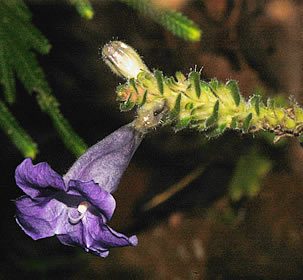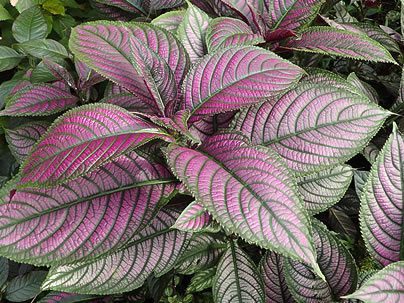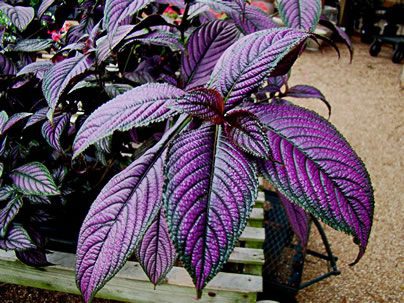The Persian Shield (Strobilanthes dyeriana) is a perennial and ornamental shrub, native to Burma in Southeast Asia. It stands out mainly for the colorful foliage, with shades of purple, featuring metallic and iridescent nuances. The genus name comes from Greek, combining “strobilos“, meaning “cone”, and “anthos” meaning flower, alluding to the shape of the inflorescence in some species. The species name “dyeriana” honors the botanist Sir William Turner Thiselton-Dyer, who was the director of the Royal Botanic Gardens, Kew, from 1843 to 1928.

This beautiful tropical shrub grows about one meter (approximately 3.3 feet) in height, with semi-herbaceous branching. It has lanceolate leaves with finely serrated margins. The leaves have a dark green background, with interveinal spaces in bright purple shades, from metallic to iridescent. In autumn and winter, it produces small purple trumpet-shaped flowers, blooming in spike-type inflorescences of secondary ornamental importance. Over time, the foliage fades from its purple hues, acquiring silver and pale tones.
Low-maintenance and highly robust, the Persian Shield is a choice that adds great interest to landscaping. With its tropical texture and purple color, it’s perfect for flower beds and mass plantings next to plants of other colors, which mutually enhance each other in groupings. It can also be grown in pots and even indoors, provided it’s near a window that receives direct sunlight. Encourage bushier growth by pinching the tips of the branches and rejuvenate the faded foliage of the Persian Shield with pruning. Prepare new seedlings annually to replace old and worn-out plants.

It should be cultivated in full sun or partial shade, in soil or substrate rich in organic matter, drainable, but with a good water retention capacity to remain moist over time without waterlogging. It prefers a humid and warm tropical climate, not falling below 10º Celsius (50º Fahrenheit). The amount of light depends on the climate. In very hot places, it prefers the protection of partial shade for more vibrant and lasting colors. In this case, opt for morning sun and avoid the hot afternoon sun. In mountainous regions with temperate climates, it thrives in full sun. In temperate regions, it is grown as an annual since it does not tolerate winter cold. In these areas, it can be taken indoors to well-lit spaces and greenhouses during winter.
The Persian Shield loves high ambient humidity, so avoid planting in dry climates or those prone to drought, as well as in locations with wind currents. Supplement air humidity through irrigation, soil covering, and adding plants that transpire a lot in the surroundings. Although perennial, it behaves like a biennial in the garden and should be replaced every two years, as it loses vigor and beauty. It easily propagates by cuttings. Prepare 15 centimeter (about 6-inch) cuttings, remove the lower leaves, leaving the remaining ones cut in half. Place them to root in a substrate kept moist and in a protected environment. It roots within about 2 to 4 weeks.


